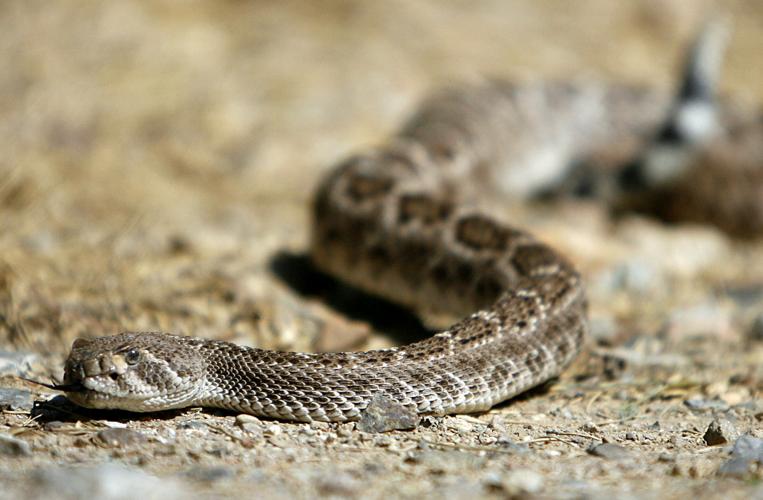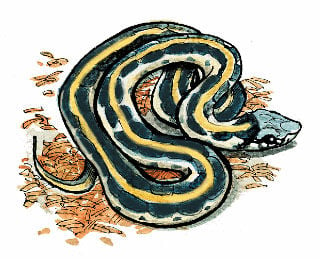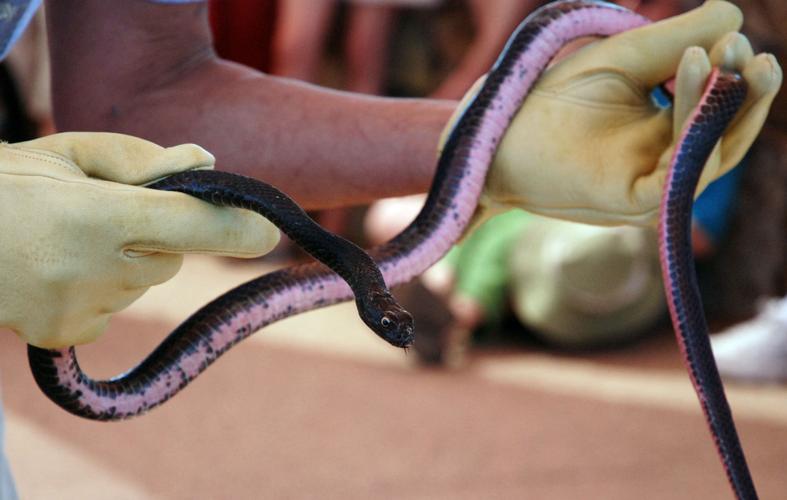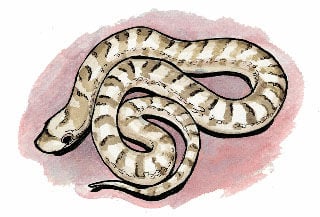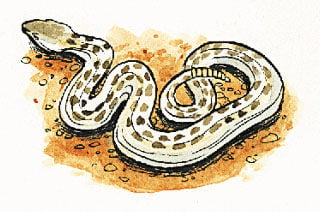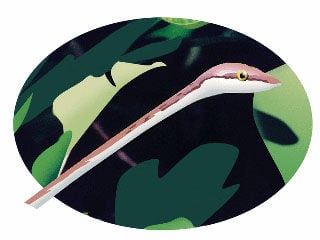Some of us know what that snake is the moment we see it and know whether to move away slowly and quietly or just step around it. And yes, we’re talking about snakes on the ground not people we don’t like.
Most of us, however, feel we must assume that almost any snake we see is dangerous or venomous because we don’t know enough about them to tell what kind of snake we are seeing.
With the help of tucson.com’s database of Critters of Southern Arizona, here are a few of the snakes you might encounter while out on the trails.

Black-necked garter snake (Thamnophis cyrtopsis)
This snake has two black spots just behind its head on each side. They are separated by pale yellow stripe. It is a brownish-green color with black stripes and two rows of spots that fade toward the end of the tail. It can be intimidating and may bite if threatened, but is not venomous.

Coachwhip (Masticophis flagellum)
This snake is slender and long, from 3 to 8 feet in length. Its color can be tan, gray, pink, black, reddish-brown or a combination of these colors. It is not venomous.

Glossy snake (Arizona elegans)
This snake either light-brown, cream, yellowish or gray in color on top with tan or brown blotches. It has smooth shiny skin. It is not venomous.

Regal ringneck snake (Diadophis punctatus)
The snakes smooth scales are a rich olive to blue-gray on top and it has a brilliant red or yellow-orange belly. The red is more intense at the tail. A neck band matches the belly color. It is not venomous but has saliva that can paralyze its prey.
An August, 2020, heatwave continued into a second week in Tucson and throughout Arizona. Tucson broke a record with a high temperature of 111-degrees. Most days bounce around from 106-109, with little monsoon rain to cool the afternoons. Video by Josh Galemore / Arizona Daily Star

Tiger rattlesnake (Crotalus tigris)
This snake’s colors can vary from blue-gray to reddish-pink. It has darker flecks or spots that form bands, which appear like tiger stripes in its back. It is more active during monsoon season and while it is reluctant to strike, it is highly venomous.

Twin-spotted rattlesnake (Crotalus pricei)
This snake is a grayish brown with two distinctive rows of brown spots down its back. There are smaller spots on the sides and the tail has distinct brown bands. It is venomous.

Vine snake (Oxybelis aeneus)
This is a very thin snake that is a good tree climber. It is well camouflaged and looks like a vine or twig on a tree. It is venomous, but that venom is only potent enough to subdue a lizard, not a person.

A western diamondback rattlesnake is generally 2-3 feet long but can grow up to 7 feet. Its colors vary.
Western diamondback rattlesnake (Crotalus atrox)
This snake is generally 2-3 feet long but can grow up to 7 feet. Its colors vary between gray, brown, pink and yellowish tones with a light brown to black diamond-shaped pattern on its back. The markings are indefinite and speckled with dark spots. The tail has black and white rings, and of course, a rattle. It is quite venomous.

Western patch-nosed snake (Salvadora hexalepis)
It is long and slender and dark green-gray with pale yellowish stripes down the back and belly. It is not venomous.
Other dangerous snakes found in the Tucson area include the Mohave rattlesnake, the blacktailed rattlesnake, the Arizona black rattlesnake and the sidewinder.
Harmless snakes commonly found in the Tucson area include the Sonoran gophersnake, nightsnake, groundsnake, kingsnake and whipsnake.


